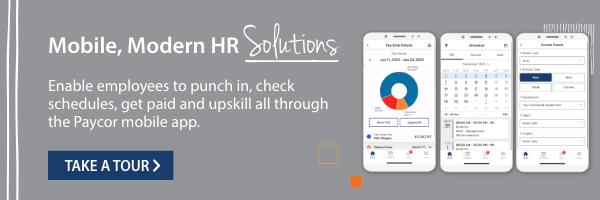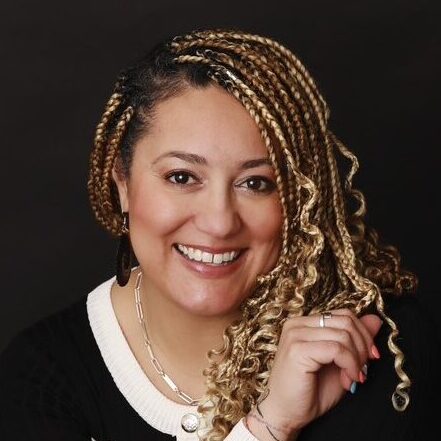These days, employees want more than a reliable paycheck. Instead of jobs, workers want meaningful, fulfilling careers. That means opportunities for professional development, support networks in and outside of work, and a sense of belonging. If you want to empower your team, Employee Resource Groups (ERGs) are a very effective way to get started.
What are Employee Resource Groups?
An Employee Resource Group (ERG), formerly referred to as an affinity group, is an employee-run network within a company that supports people who share a common identity, interest, or experience. Some businesses call them BRGs or Business Resource Groups so that they have a focus on advancing business goals as well. Below are just three of Paycor’s seven ERGs:
- Colorful Connections promotes networking, raises awareness, and creates opportunities to support the advancement of Paycor’s culturally diverse population.
- WIN (Women’s Inspiration Network) empowers Paycor women to connect, inspire and impact others through personal and professional development opportunities.
- MAP (Mental Awareness Project) works to eliminate the stigma of mental health challenges and to bring awareness to tools, resources and support for employees that may need them.
These groups can meet online or in person. They’re a place for employees to network and socialize, develop their careers, and raise awareness of issues they’re passionate about.
With the right support from leadership, ERGs can play a major role in company culture. They foster diversity, equity, and inclusion by giving employees a voice, and play a role in advancing the goals of the business. ERG Leaders can obtain vital leadership development skills which can impact their retention and promotion in their roles. Members get to collaborate with coworkers from other departments, expanding their networks and learning from each other.
How Do Employee Resource Groups Work?
Every Employee Resource Group is different. In a small company, an ERG could just be a few colleagues who get together on their lunch breaks. Larger organizations like ours often have more formal ERGs, with requirements for membership and a regular calendar of events.
ERGs set their own goals, defined by the members and leaders of the group. For example, an ERG focused on mental health could support members’ well-being by connecting them to resources and giving them a place to find support. On the other hand, it could focus on advocacy, raising money and awareness about common mental health challenges.
Most Employee Resource Groups are volunteer-run. But if your company has the budget, it’s a great idea to compensate group leaders! Running an ERG can be as time-consuming as a second job, and it’s important for company leadership to recognize the value of this work. If you can’t give your ERG leaders a bonus or stipend, look for other ways to acknowledge their hard work and contributions publicly and internally.
The Benefits of Employee Resource Groups
Thriving ERGs can work wonders for your company culture, and even help you achieve business goals. Let’s take a look at some of their key benefits.
Employee Engagement
Now more than ever, people crave a sense of community. But it’s hard to make time for friendships outside of work. What’s more, the rise of remote work is fueling an epidemic of loneliness. One study found that since they started working remotely, 67% of workers find it “harder to make friends and maintain relationships with work colleagues” (The HR Director). The creation of and participation in these groups can help your team bond with like-minded people. And having friends at work makes people ~2x as likely to be engaged (World Economic Forum).
An Inclusive Environment
Diversity in the workplace is an important goal for many companies. ERGs can make your organization more attractive to candidates from diverse backgrounds or those with diverse experiences. Upon hire, joining one of these groups can help all people feel safe, included and like the business cares about the things outside of work that are important to them. Employee resource groups amplify the voices of people who experience oppression, showing them – and your customer base – that DE&I is a priority for you.
I firmly believe Employee Resource Groups are an invaluable asset to organizations because their work is the heart and soul of company culture. They represent the voice of people that feel unheard. Their advocacy, support and awareness are one of the most impactful ways to drive successful business outcomes and engagement.
Professional Development
In addition to fostering relationships and a culture of inclusion, ERGs support your employees’ career growth. That can happen in several different ways. First, members get leadership experience by running the ERG itself, holding events, and creating company-wide campaigns. As your ERG networks grow, leaders and members learn from each other, collaborate, and discuss how best to move the work forward. By working as a team, colleagues from different departments offer each other with new perspectives and insights to boost their career – and personal – growth.
Recruitment and Retention
Employee Resource Groups don’t just improve the employee experience – they also have a measurable impact on recruitment and retention. One survey found that “70% of Gen Z respondents were more likely to apply for a job at a company with an ERG” (U.S. Chamber of Commerce). And across all age groups, >50% said they’d be more likely to stay with a company that had Employee Resource Groups.
Business Innovation
In a large organization, you face an ever-present risk of silos. Everyone has their own areas of expertise and teams becomes so specialized that they can develop inertia. Because Employee Resource Groups include people from across departments and roles, they can kickstart creativity by sharing processes and insights cross-functionally. Whether or not the ERG itself suggests new projects, members will bring fresh insights into their everyday roles.
How Paycor Can Help
Paycor builds HR software that empowers leaders – so you can empower your whole team. Our employee surveys, performance review tools, and learning pathways let you participate in your team’s professional development. Use powerful analytics to understand what your employees need at work – it might just be an ERG.











